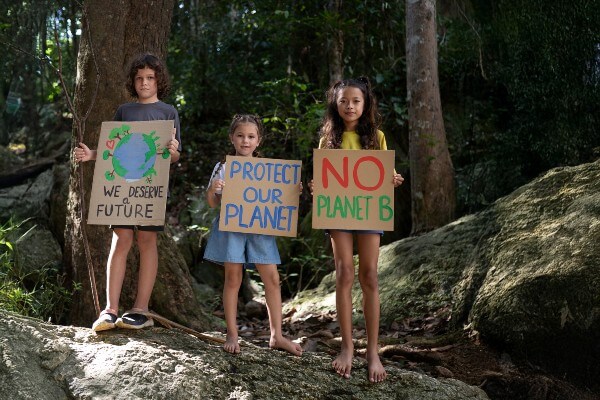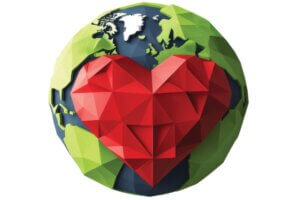Children of the World

In today’s interconnected world, children are increasingly exposed to global issues. As parents, it is essential to guide them in understanding these complex topics in a way that is age-appropriate, informative and fun!
Work out where they’re at
Before diving into discussions about global issues, it is crucial to assess your child’s current understanding and awareness, so ask openended questions to gauge their knowledge and feelings about the topic. This approach not only helps you tailor the conversation, but also ensures you glean any misconceptions or fears they may have.
Environmental awareness
When you’re ready, why not steer the conversation away from terrors of global warming and instead explain the positive effects of environmental conservation, and how small, local actions can make a big difference.
Discuss topics that your child can actively change, such as climate change, pollution, and wildlife preservation. Use examples such as recycling, conserving water and protecting animals to illustrate your points.
Understanding inequality
Discuss the importance of fairness, justice and equality. Talk about issues such as poverty, discrimination and human rights. Use stories and examples from around the world to highlight the struggles and triumphs of different communities, and focus on what unites us rather than what divides us.
Be age-aware
Try to tailor all discussions to your child’s age and developmental stage. For younger children, use simple language and concrete examples they can relate to. For older children, you can delve deeper into the complexities and encourage critical thinking.
Encourage curiosity
When they inevitably come, create a safe space for your child to ask questions. Guide their inquisitive minds and be patient in addressing their inquiries. If you don’t know the answer, it’s okay to admit it. Use it as an opportunity to explore the topic together.
Instil empathy and compassion
Encourage your child to empathise with people affected by global issues. Discuss how they can help, whether through charitable actions, raising awareness, or simply being kind and understanding. Highlight stories of individuals who have made a positive impact, inspiring them to believe in their ability to contribute to change.
Reach out with role play
A great way for helping your child’s understanding of these themes is to work on role-playing and hypothetical scenarios. This interactive approach allows them to explore different viewpoints and consider the consequences of various actions.
This will also ensure important learning such as this is accessible and fun!
Utilise educational tools


